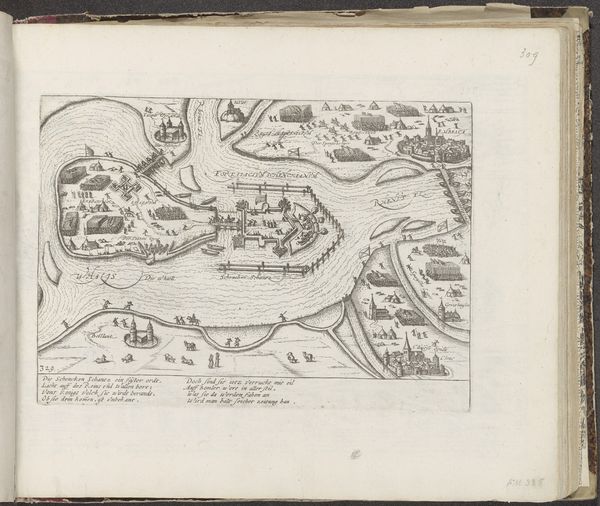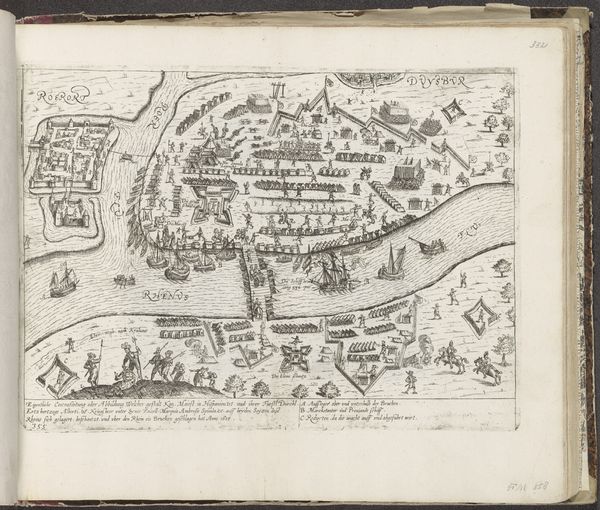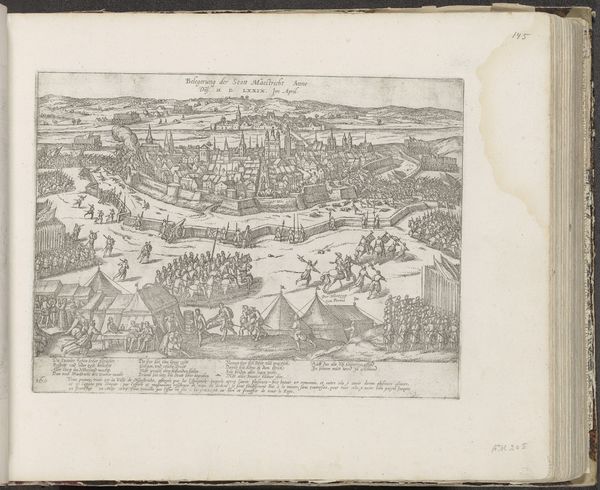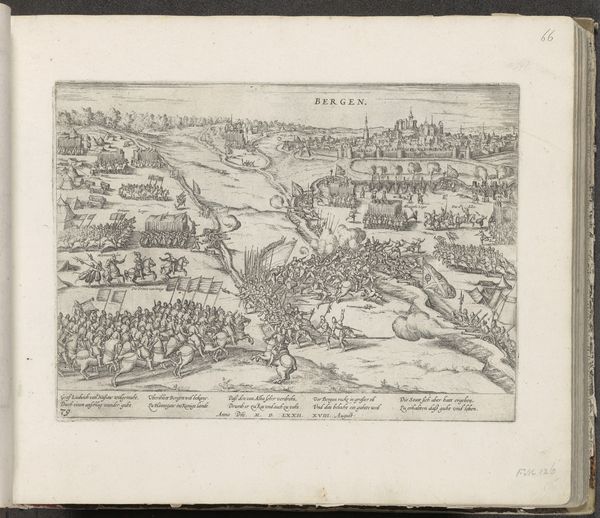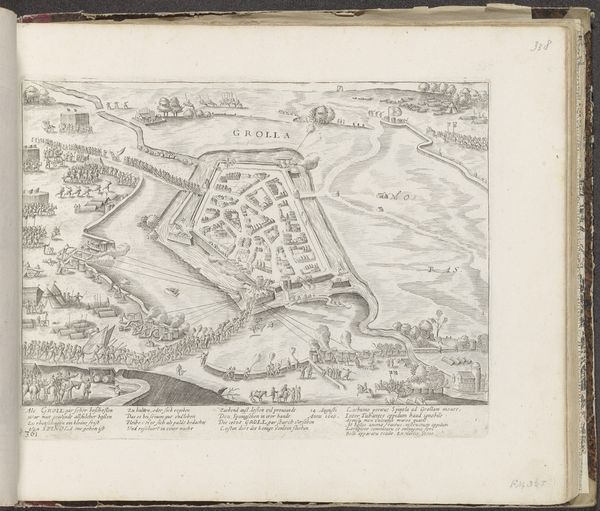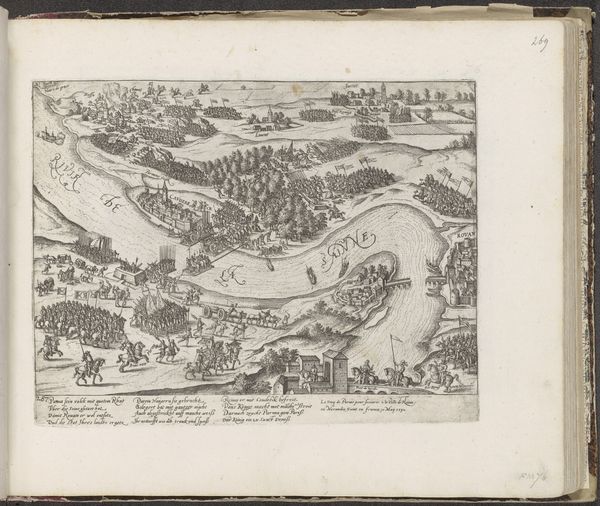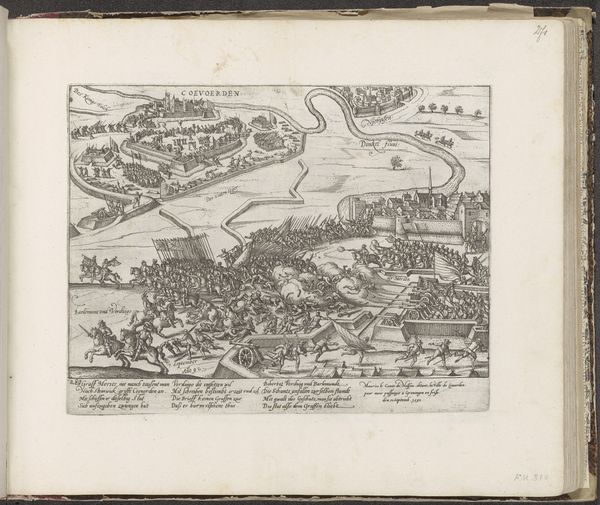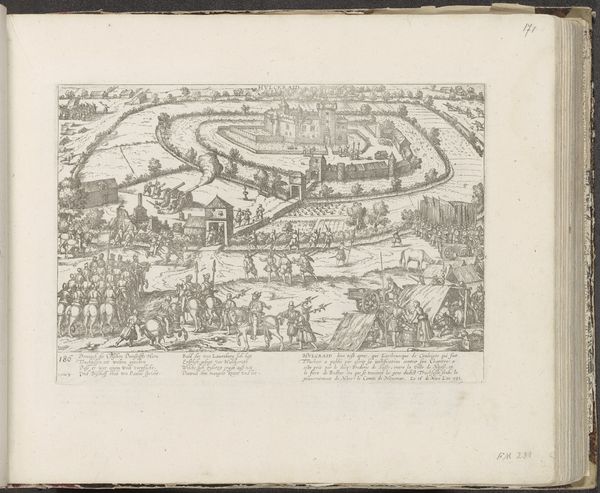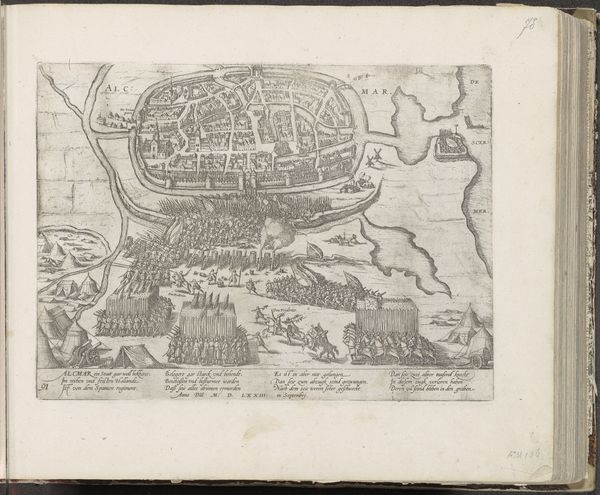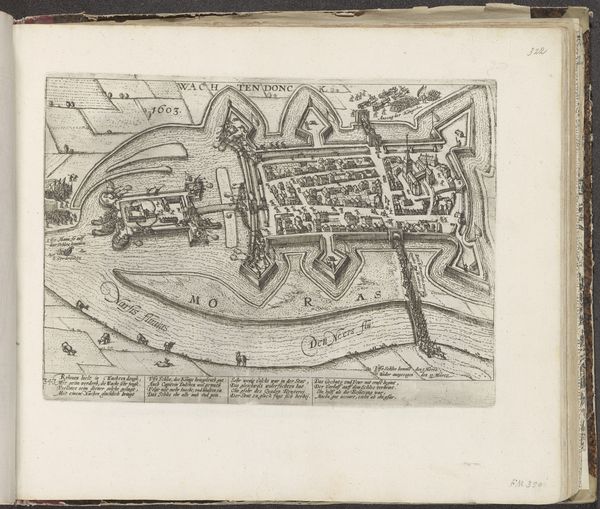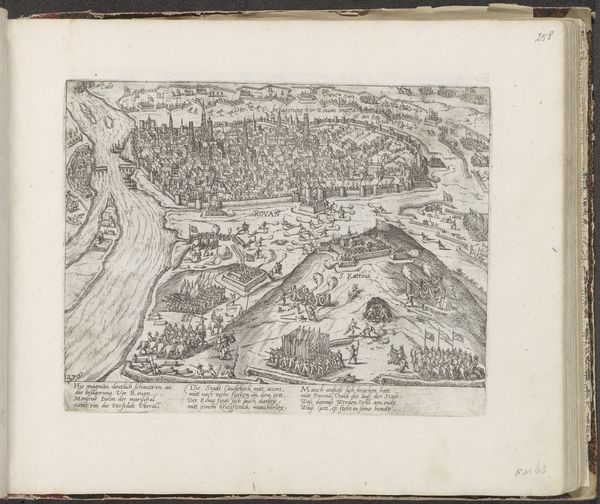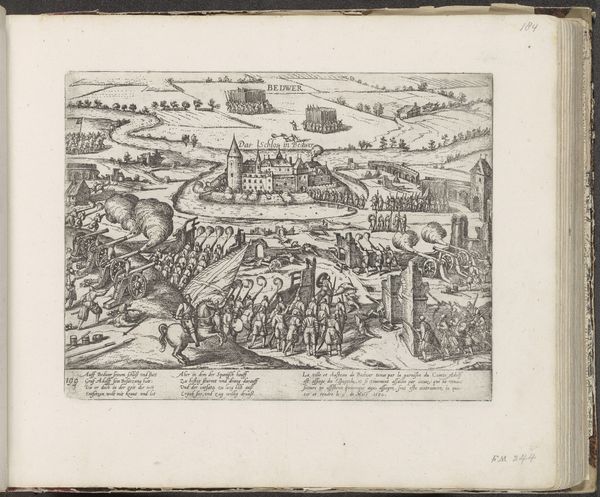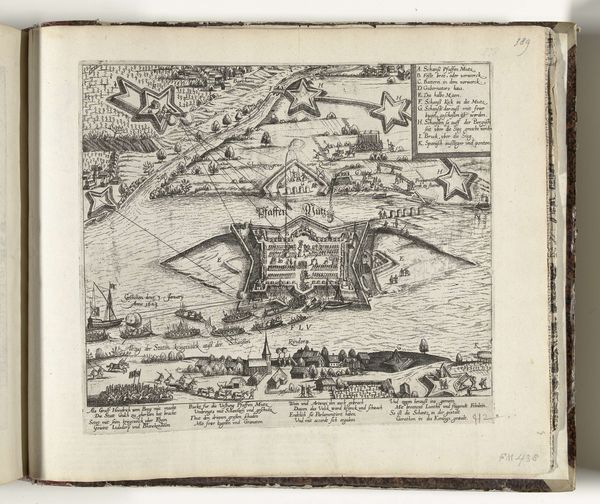
drawing, print, paper, ink, engraving
#
drawing
#
aged paper
#
toned paper
#
narrative-art
#
pen drawing
# print
#
pen sketch
#
sketch book
#
mannerism
#
paper
#
personal sketchbook
#
ink
#
pen-ink sketch
#
pen work
#
sketchbook drawing
#
cityscape
#
history-painting
#
sketchbook art
#
engraving
Dimensions: height 210 mm, width 265 mm
Copyright: Rijks Museum: Open Domain
Editor: So, this engraving, "Hendrik IV neemt La Fère in, 1596," made between 1596 and 1598 by Frans Hogenberg. It looks like a detailed bird's-eye view of a city under siege, a ton of tiny figures and buildings. It feels very precise, almost like a map, but it's also telling a story. What kind of story do you see in all this detail? Curator: The detail is key, isn’t it? Hogenberg isn’t just recording geography, but weaving a potent visual narrative. Note how the figures, though small, are clearly delineated—soldiers, citizens, the implied clash of forces. The symbolic weight here comes from this tension: La Fère isn’t just a place, but a prize, a representation of power and control in a period of intense religious and political conflict. Do you see any specific iconographic element standing out? Editor: I notice the flags… different banners being carried by each side. Are those symbols telling us more about the sides involved? Curator: Precisely. The flags are not mere decoration. They function as emblems, signaling allegiances and ideological stances. Think of them as shorthand for the cultural narratives each army carries with it. The act of capturing La Fère becomes, then, the visible triumph of one symbolic order over another. What psychological impact does this visual language have, do you think, on a contemporary viewer? Editor: It makes it seem… very official, like a news report almost. But one trying to glorify the French King's conquest, not just inform the viewer. Curator: Yes! By depicting a specific event, the image participates in the construction of a national hero and collective memory. This is history as propaganda, but powerfully so, influencing how generations understand the past and, perhaps more importantly, their place within it. Editor: That’s fascinating. I initially saw it as just a detailed landscape, but understanding the symbolism makes it a much richer, more complex artwork. It really brings the past to life. Curator: Indeed, these images function as containers of cultural memory, ensuring that the narratives of power endure through generations.
Comments
No comments
Be the first to comment and join the conversation on the ultimate creative platform.
